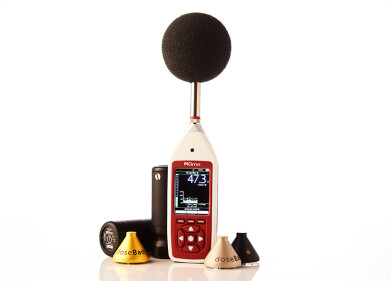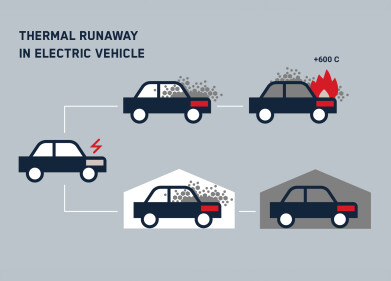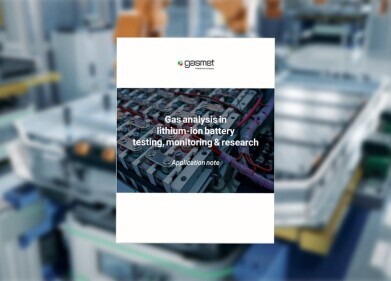Health & safety
In response to the Supreme Court ruling on the US MATS rule
Jun 30 2015
What is going on with the US Mercury and Air Toxics Standard (MATS)?
Dr Lesley Sloss, IEA Clean Coal Centre www.iea-coal.org
News broke yesterday concerning the Supreme Court ruling on the US MATS rule:
MATS (Mercury and Air Toxics Standard), the legislation which has been bounced back and forth between the US EPA and the law courts for several years, has been hit out of bounds again. Whilst far from dead in the water, MATS will require some re-writing before it takes its final and permanent form.
The following quick questions and answers will hopefully help clarify the situation for our readers:
What is MATS?
MATS is the US EPA’s legislation which aims to reduce several pollutants simultaneously from coal-fired power plants. The rule sets new emission limits for particulate, sulphates and nitrates (as acid emissions) and mercury. It is the mercury limit which has turned out to be most challenging. And the most expensive.
So why is mercury control so expensive in the US?
It is important that we stress the uniqueness of the US situation. Many nations, (eg EU member states, Japan, Korea and now China) have achieved or are achieving significant mercury control through “co-benefit effects”. That is – their mercury emissions have been reduced due to controls placed on other pollutants (SO2, NOx and particulates). For example, the EU has achieved over 70% mercury emission reduction from the coal sector since the 1980s without any mercury specific controls whatsoever. This is currently working in a similar manner in China - China has an emission limit for mercury which is not challenging at all, but the requirement for flue gas control for acid gases has resulted in significant mercury control as a co-benefit. Recent data suggest that mercury emissions from the Chinese coal sector peaked in 2014.
The US took a different route on emissions control during the 1970-2000s. Whilst the EU effectively required installation of particulate and acid gas controls on ALL plants, the US chose emissions trading – some plants would fit controls, some would use lower sulphur fuels and some would buy emission allowances and continue to release sulphur. This meant that many plants did not fit controls and, as a consequence, the co-benefit effects were significantly lower in the US than elsewhere. And so, as MATS arrived with tighter emission limits on acid gases AND mercury, all of a sudden, some plants found that they could no longer trade their way into compliance and would have to install very expensive combinations flue gas controls to remain in operation.
Why does it keep ending up in court?
Quite simply – many US states and individual industry and utility companies argue that the cost of compliance with MATS is too high. The current text has no reference to cost implications – no “where reasonably affordable” escape route. All plants MUST comply with the stringent legislation regardless of how much it may cost. And the legislation IS stringent – all plants must reduce their mercury emissions to match those of the cleanest 12% of plants in the country. Whilst this is admirable, it does cause significant problems for some plants. Mercury is a complex beast – it is easily controlled in some plants and a significant challenge in others. So whilst some plants can comply by spending a little, others are facing closure as the cost of retrofitting control technologies is too high.
Justice Antonin Scalia at the Supreme Court ruling is quoted as saying that “it is not rational, never mind “appropriate”, to impose billions of dollars of economic costs in return for a few dollars in health or environmental benefits”. The cost of compliance with MATS has been estimated at $9.6 billion/y but the EPA estimate the health benefits to be somewhere between $37 billion and $90 billion annually. Since these benefits are calculated based on increased life expectancies and reduced health effects, the values are open to, and the subject of, much debate.
What does this latest court ruling mean?
The Supreme Court ruled on June 29 2015 against MATS in its current format. Once again, the US EPA will have to go back and re-draft the text. This time they will have to build in some sort of cost-effectiveness calculation which, I assume, could exclude some plants from complying if compliance will mean either plant closure (and the associated loss of jobs) or will mean that the plant cannot operate without external funding (which is not commonly available in the US). However, in the meantime, MATS appears to remain on the books - since the rule itself still applies (that is, the aim to limit emissions), the limits will still apply and most utilities will still be expected to move towards compliance.
What does this mean for US utilities?
Apparently over 70% of US coal plants have already gone ahead with their compliance options and billions have been invested in new technology installations. A recent report by the IEA Clean Coal Centre (Sloss, 2015, The emerging market for mercury control, http://ilmt.co/PL/jpKJ) reviews which technologies have been applied at US plants. However, many of the remaining plants have approved delays, which may give them a window of opportunity to reconsider their compliance options.
What will be the ripple effects in the international community?
This is a blow to the Obama administration in its final term. Significant work has come out of this administration in terms of legislation and policy towards cleaner air. And much has met with counter-legislation. This blow to MATS will not help the US position as they move into international discussions on global emissions policy.
The Minamata Convention on mercury has not yet been ratified but may well move into action within the next 2-3 years. The convention is already working to define BAT/BEP (best available technology/best environmental practice) for new plants and some existing plants (depending on individual national action plans). The current BAT/BEP guidance includes some information on costs but warns that it is neither simple nor wise to predict costs when equipment, labour and other regional factors can significantly affect costs on a case by case basis. Further, unlike MATS, the current text of the convention does include the term “where economically feasible”, thus reducing the pressure on those signatory countries who wish to comply with the convention without significant strain on their national economy.
For developing regions and emerging economies, signing and ratification of the Minamata convention is a major commitment and many are hesitant to move forward until they understand the cost implications. For this they look to the international community to learn from those who have already committed to mercury reduction. On one hand they will see countries such as those in the EU who appear to be in compliance at minimal cost whilst on the other hand the USA is spending billions. Obviously, the EU route is more re-assuring. The current MATS situation may, unfortunately, be perpetuating the myth that mercury control is expensive.
The UNEP (United Nations Environment Programme) Coal Partnership, led by the CCC, is currently trying to provide information to emerging countries and others who are hesitant to commit to Minamata. We wish to reassure them that their commitment is likely to follow the path of the EU, through cost-effective co-benefits, or even along the path of Canada, through a combination of fuel switching, energy switching, co-benefit and specific controls.
The situation in the US is unique – the limit is extremely tight and, since it applies to several pollutants simultaneously, can mean that some plants require a combination of control technologies.
New signatories to the Minamata Convention should understand that the convention is far more flexible in terms of emission reductions and that the cost of compliance is very much taken into account. GEF (Global Environment Facility) funding is available to help at all stages of ratification and compliance for those countries who need it.
Digital Edition
IET 35.2 March
April 2025
Air Monitoring - Probe Sampling in Hazardous Areas Under Extreme Conditions - New, Game-Changing Sensor for Methane Emissions - Blue Sky Thinking: a 50-year Retrospective on Technological Prog...
View all digital editions
Events
May 28 2025 Astana, Kazakhstan
Jun 01 2025 Baltimore, MD, USA
EAGE Conference & Exhibition 2025
Jun 02 2025 Toulouse, France
Caspian International Power and Green Energy Exhibition
Jun 03 2025 Baku, Azerbaijan
Jun 04 2025 Koeln, Germany





.jpg)








.jpg)




